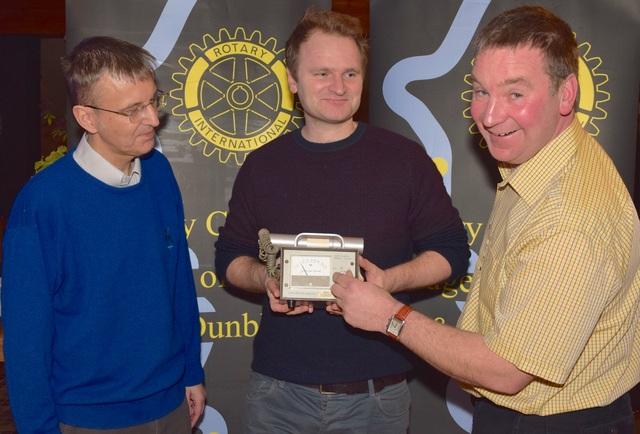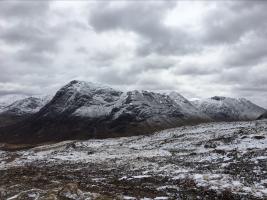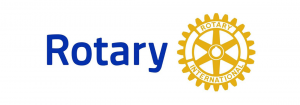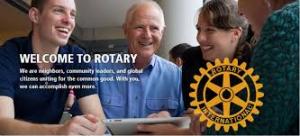Adam Varley - Chernobyl
Thu, Feb 9th 2017 at 6:00 pm - 8:00 pm
Adam Varley - Chernobyl

CHERNOBYL
The Chernobyl accident that took place on 26 April 1986 was the most disastrous nuclear accident in history, both in terms of cost and casualties. It is one of only two nuclear accidents classified as level 7 event (the maximum classification), the other being the Fukushima nuclear disaster in Japan in 2011. Adam Varley, from the University of Stirling, gave the Bridge of Allan and Dunblane Rotary Club fascinating information about the environmental impact of the disaster, and, in particular, the affect on human health.
As an introduction, he gave interesting information on the presence of radioactivity in many everyday objects, including – perhaps surprisingly – bananas, and also in a number of medical procedures. The human body has some resilience against such radioactivity; the problem arises when there is a large-scale disaster.
In Chernobyl, safety checks were over-ridden to the point where meltdown occurred in the reactor with a catastrophic release of radioactivity into the environment. The isotope responsible for the majority of the external gamma radiation was caesium-137, which has a half-life of about 30 years. As of 2016, 30 years later, the radiation exposure from that radionuclide has declined by half since the 1986 accident, with another thirty years before it finally decays.
Following the meltdown, there was an heroic effort by local firefighters who were not well equipped to deal with radioactive leaks on this scale. In their efforts to damp down the fire, many died from the radiation, or suffered health problems in later life. Alongside the work at the site, there was a huge scientific effort to minimize the affects of the radioactivity which were particularly felt in the region close to the plant, but which also extended many thousands of miles. Indeed, the ramifications are still being felt in many areas, including some parts of the British Isles.
In terms of the immediate area around the plant, although it was evacuated and an exclusion zone established, there was a 50 per cent increase in leukemia as well as significant other side-effects. In terms of the impact on natural life, there was a 66 per cent decrease in bird life. However, as the level of radiation has reduced, animal life has been quick to recover, with horses, foxes, wolves, bison and other animals having returned and now apparently thriving. Arguably, as Adam pointed out, on this evidence, animals have suffered less from radiation than they would have from humans!
To demonstrate the vagaries of radiation, Adam showed a graph that displayed levels measured at the site. Ironically, compared to these levels, the radiation experienced during his return flight to Britain was noticeably higher.
Speaker’s Host, Russell Wheater, thanked Adam for the insight given into this particular disaster and the information into the affects of radiation, both specifically and generally, a view which was supported by members.




